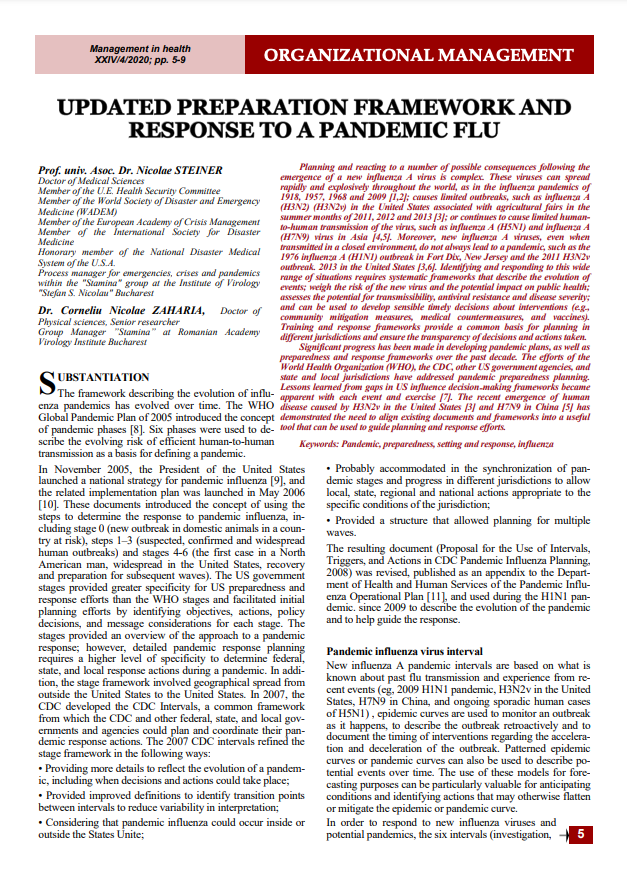Abstract
Planning and reacting to a number of possible consequences following the emergence of a new influenza A virus is complex. These viruses can spread rapidly and explosively throughout the world, as in the influenza pandemics of 1918, 1957, 1968 and 2009 [1,2]; causes limited outbreaks, such as influenza A (H3N2) (H3N2v) in the United States associated with agricultural fairs in the summer months of 2011, 2012 and 2013 [3]; or continues to cause limited humanto-human transmission of the virus, such as influenza A (H5N1) and influenza A (H7N9) virus in Asia [4,5]. Moreover, new influenza A viruses, even when transmitted in a closed environment, do not always lead to a pandemic, such as the 1976 influenza A (H1N1) outbreak in Fort Dix, New Jersey and the 2011 H3N2v outbreak. 2013 in the United States [3,6]. Identifying and responding to this wide range of situations requires systematic frameworks that describe the evolution of events; weigh the risk of the new virus and the potential impact on public health; assesses the potential for transmissibility, antiviral resistance and disease severity; and can be used to develop sensible timely decisions about interventions (e.g., community mitigation measures, medical countermeasures, and vaccines). Training and response frameworks provide a common basis for planning in different jurisdictions and ensure the transparency of decisions and actions taken.
Significant progress has been made in developing pandemic plans, as well as preparedness and response frameworks over the past decade. The efforts of the World Health Organization (WHO), the CDC, other US government agencies, and state and local jurisdictions have addressed pandemic preparedness planning. Lessons learned from gaps in US influence decision-making frameworks became apparent with each event and exercise [7]. The recent emergence of human disease caused by H3N2v in the United States [3] and H7N9 in China [5] has demonstrated the need to align existing documents and frameworks into a useful tool that can be used to guide planning and response efforts.

